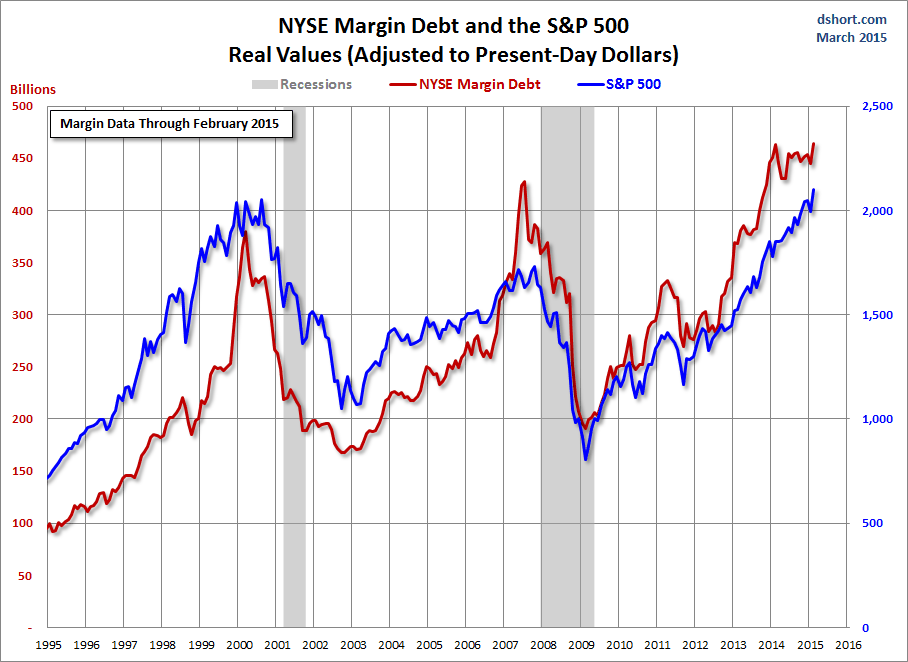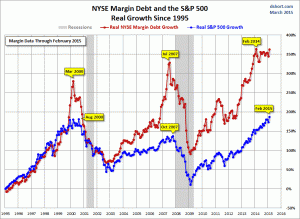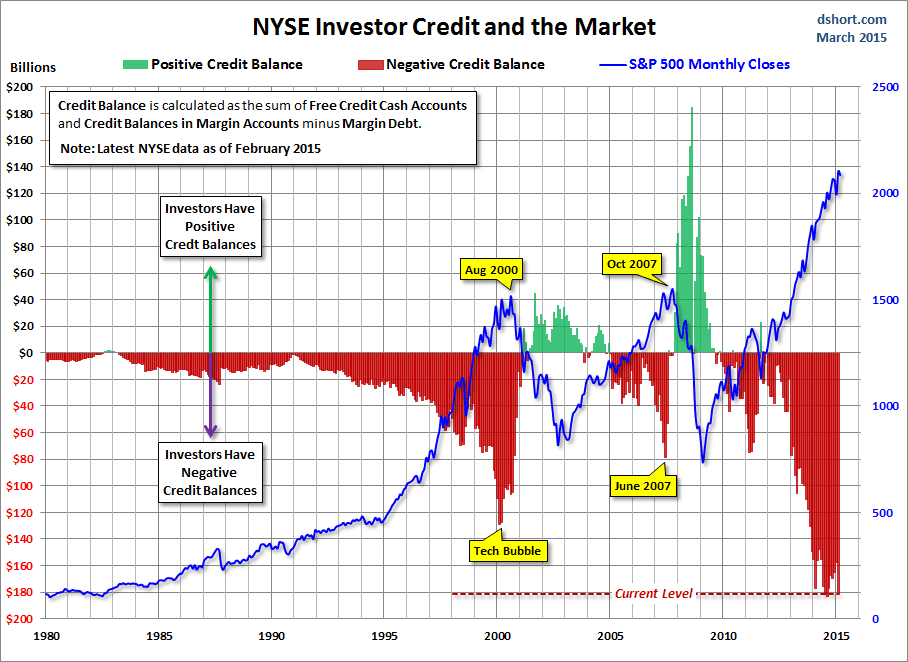I’m Not Dead Yet!
No one knows of a “natural” rate of indebtedness such that it automatically triggers default. This applies to individuals, companies and entire nations. We do have evidence that more debt, especially over certain thresholds, causes slower growth and possibly a whole lot of problems down the road. But the timing of when the negative effects materialize remains unknown.
With this in mind, and as the market keeps screaming, here’s a series of four charts, three of which you can find on Doug Short’s website. They should not be used to derive a prediction of what is about to happen. However, one should wonder if in this case “more” is “better.”
The first chart traces the evolution of margin debt and the S&P 500 Index over the past 20 years. The remarkable correlation is possibly explained in two ways: as the market rises investors have more collateral to borrow against, and “animal spirits” will push them to be more aggressive in their speculation.
Margin debt appears to have moved higher than the S&P. This is confirmed by the second graph where you will see that in the same period margin debt has grown more than the market: since 2003, the marginal desire to borrow and speculate has accelerated.
Do investors have a “mean reverting” function in borrowing? Is there a 0 balance in “equilibrium”? It’s difficult to say. As the next graph demonstrates, recently the relationship between indebtedness and the market appears to have evolved into a new phase of self-reinforcing waves – something that was not visibly there before 1995. Perhaps this is a feature of two rounds of strong monetary stimuli, the last one still pending in outcome.
Source: dshort.com
In case you dismiss some of this by arguing the relative importance of debt is what matters, here’s a chart with margin debt as a percentage of GDP; it appears to be close or equal to the level in 1929 (not shown):
Source: goldsqueeze.com
The coming increase in interest rates is not of a cyclical nature, both in scope and potential impact. It will bear directly on the cost of a mountain of margin debt and my guess is that it may bring more negative volatility than in normal interest rate cycles. And along with that, the customary legislative wrangling and threat of further intervention.
Can something be done about speculative waves? Probably not much; but an idea comes to mind. The Federal Reserve sets the margin requirement. A policy rule designed to dampen speculative excesses – on the upside as well as on the downside – could be to gradually and counter-cyclically raise or lower the margin requirement according to a number of pre-defined valuation tools. The rule needs to be well defined and understood, and the tools need to have empirical relevance for the estimation of future stock returns (cyclically adjusted P/E, price-to-sales, dividend yield, Tobin-Q, for example). Technical details aside, an advantage of proceeding in this fashion is that no congressional intervention is needed.
Video source: youtube.com, Monty Python: Not Dead Yet.



